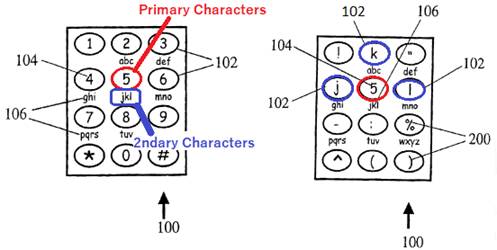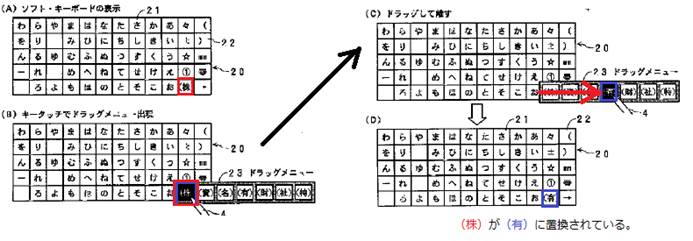
|
CAFC判決 Google
v. Phillips 2020年
01月 06日 OPINION
by JUDGE Lourie, Bryson and Taranto 自明性
(Single Point of Novelty) Summarized
by Tatsuo YABE – 2020-01-19 |
|
本事案は103条(自明性)判断に関する判決で、自明性判断の中でもObvious
to Try(当業者にとって自明の試み)の適用に関して説示した。より詳細には方法クレームの最後のステップのみが引例との差異であり(この点に関して両当事者に異論はない)、その差異が当業者にとって限られた数のオプションと理解される場合にはObvious
to Tryと理解されると判示した。但し、当該差異が当業者にとって容易なオプションであったとしてもクレームの他の構成要素と組み合わせることで予期せぬ効果を出せる(2007年KSR最高裁判決)ということを主張できていれば非自明と判断されていた可能性もあると思料する。尚、本事案の特許クレーム1の文言はかなり広範に規定されているので予期せぬ効果の主張はやはり困難であったと考える(事実従属クレームの多くはIPRの対象となっていない)。(以上筆者)
|
■■■■■■■■■■■■■■■■■■■■■■■■■■■■■■■■■■
■ 事件の背景:
Phillips社はUSP6885318の再発行特許44913号(旧式携帯電話のキーパッド)の権利者でAcer社を相手に侵害訴訟を提起した。然し問題となる入力手法のOperation
SystemはGoogle社によるものだったのでGoogleがIPRを申請した。Goodleは新たな先行技術文献で自明性を主張したがPTABはGoogleの主張を認めず当該再発行特許44913の独立クレームを維持した。Googleは同審決を不服とし控訴した。
|
■ 特許権者:Koninklijke
Phillips N. V. (アムステルダムの多国籍企業)
■ 関連特許:Re
44,913 (Reissue Patent of USP No. 6,885,318) 以下913特許と呼称する。
■ 特許発明の概要:
ユーザーの文字入力を容易にする携帯電話などのキーパッドに関する。キーパッドのキー(実施例では12のキーでメインとなる文字が表示されている)の各々には2次的な複数の文字(例:「5」には「jkl」の3文字)が付随している。以下左図にあるように初期状態では12個のキーには1〜9;*;0;#が表示されている。
|
例)ユーザーが初期状態から「L」という文字を入力したい場合にはキー「5」を所定時間以上押さえる。そうすると右図のようにキー「5」に付随した2次的文字(JKL)がキー「5」の左、上、右のキーに表示される(第2表示状態)。そして右側のキー「L」の入力が可能となる。2次表示における文字の入力が終わるとキーパッドは初期状態に戻る(初期状態)。
|

|
従来例(原特許の出願日2002年以前)の操作では文字「L」を入力するのに「5」のキーを3度押し操作する必要があった、それと比べると入力操作がし易いというのが発明である。
|
独立クレームにおいて上記発明の入力に対応するキーパッドの変化の状態(初期状態>2次表示状態>初期状態)が規定されている(以下参照)。
|
■ 代表的なクレーム:
|
|
クレーム |
Re 44,913 (USP6885318の再発行特許) |
|
|
1. A
method for inputting a character to a device, the device including a
keypad, the keypad including a plurality of keys, at least one of the keys
has a primary character, a plurality of secondary characters and an
associated display area, the keypad in a default state displaying the
primary character associated with the at least one key in the associated
display area, the method comprising acts of:
in the default state,
returning the primary character as an input character in response
to selection of the at least one key for a period shorter than a
predetermined time period;
switching to a second state after detecting a first key selection
of the at least one key for a period longer than the predetermined time
period;
in the second state
displaying each of the secondary characters associated with the
first selected key in a respective display area;
detecting a second key selection;
selecting for the input character the secondary character
associated with the second key se-lection; and
returning the keypad to the
default state. |
|
■ 争点に関して:
先行技術と比べて1点の違い(相違する一つの特徴)があるクレームのその相違点がObvious-to-Try(当業者による自明の試み)に該当するか?
|
GoogleはSakata引例に鑑みクレームの自明性を主張した(他にも無効理由はあるが最も説得性のある主張)。
|
Sakata
(JP2000-148366)

|
Sakata引例には初期画面(初期表示)においてキー「(株)」を所定時間以下押すと対応するキーの文字が入力される。しかし所定時間以上押さえていると水平方向に複数のキーが2次表示され、ユーザーは2次表示キーから所望するキー「(有)」を入力できる。2次表示キーによるキー入力操作を終えると初期表示の状態で所定時間以上押し操作したキー「(株)」が2次表示で押し操作したキー「(有)」に置換される。
|
依って、問題となる913特許クレームの最後のステップ「returning the keypad to the default state)という特徴」が相違点でありPTABはクレームの特許性を維持した。
|
■ CAFCの判断
両当事者は、Sakata引例には問題となる913特許クレームの最後のステップ「returning
the keypad to the default state:初期状態に戻す)という特徴」が開示されていないということに同意している。
|
CAFCは2007年のKSR最高裁判決を引用し、以下の2つの自明性理由を述べた。第1の理由は「Obvious
to Try(自明の試み)」で第2の理由は「Mere
Substitution(単純な置換)」である。
即ち、問題の解決手法が当業者に予想可能で限られた数しかない場合に、引例にその解決手法が開示されていなくとも当業者にとって自明の試み(obvious
to try)であるとしクレームは自明であると結論づけられる。さらにクレームのある特徴(引例には欠落している特徴)が周知技術の置換(mere
substitution of one element for another known in the field)にすぎない場合にはクレームは自明とされる。
|
In
KSR, the Supreme Court set forth various articulations of “a properly
flexible obviousness inquiry” that is “not subject to a rigid formula.” Perfect
Web, 587 F.3d at 1327, 1329 (internal quotation omitted). The Court’s
related formulations reflect the need for grounding such de-terminations in
facts indicating why the claimed invention would have been obvious, while
recognizing real-world pressures for innovation and both the “background
knowledge” and “ordinary creativity” of a relevant artisan. KSR,
550 U.S. at 416−21. In one formulation that is key to this case, the Court explained
that when “there is a design need or
market pressure to solve a problem and there are a finite number of identified,
predictable solutions, a person of ordinary skill has good reason to pursue the
known options within his or her technical grasp.” Id. at 421. If
such an option is in that way “obvious
to try,” and the “anticipated
success” results, a conclusion of
obviousness may follow. Id. That formulation is related to, and its
application must be informed by, other explanations the Court set forth about
“predictab[ility]” and “known” options and their effect on obviousness
determinations. Id. at 416 (precedent established that “when a patent
claims a structure already known in the prior art that is altered by the mere
substitution of one element for another known in the field, the combination
must do more than yield a predictable result”); id. at 417 (“a court
must ask whether the improvement is more than the predictable use of prior art
elements according to their established functions”; referring to “simple
substitution of one known element for another” as basis for obviousness).
|
本事案において、Phillipsの913特許クレームでは最後のステップで初期状態(初期状態のキー)に戻すという点がSakata引例と識別される特徴であり、Sakata引例では最後に入力したキーの状態を維持する(置換される)という特徴が開示されている。どちらがユーザーの入力操作をより支援するか(即ち入力操作の効率が上がる)はユーザーの技術分野によっても異なる。例えば、化学分野であればmm(初期状態のキー)をmg(第2状態)のまま維持した方が良い場合が多いだろう。電線メーカーであればその逆が良いだろう。国際金融市場に関するライターの場合には貨幣表記($とか€)が置換されているままの方が良いであろう。然るにPhillipsの913特許クレームの方がSakata引例の技術より入力効率が上がるとは一概には言えない。従って、クレームの最後のステップは周知技術の単なる置換(mere
substitution)に過ぎるとは言えない。
しかしながら、Sakata引例の第2状態で所望するキー(文字)を入力した後に起こり得ることは2つしかない(1)キーの文字を置換されたままにする;(2)初期状態のキーに戻す。依って、実験を繰り返すこともなく、常識的なロジックに基づき「初期状態に戻す」という特徴は当業者にとって容易なオプションであると判断される。従って、Sakata引例の「キーの文字を置換する」という特徴に代えて「初期状態に戻す」ことは当業者にとってObvious
to Try(自明の試み)であったと考えられる。依って、913特許のクレーム1は自明である。
|
結論:
|
審決を破棄する。
|
■■■■■■■■■■■■■■■■■■■■■■■■■■■■■■■■■■
|
|
(5)
LINKS
|